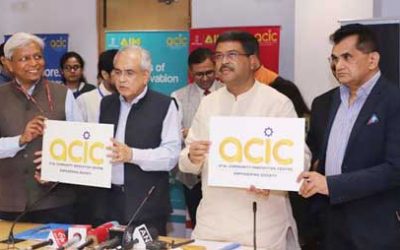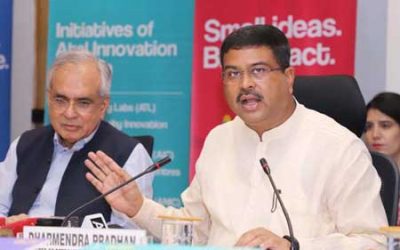The recent announcement made by Facebook to invest ₹43,574 crore for a 9.9% stake in Reliance Industries Ltd.’s Jio Platforms has created enormous interest in the Indian market (see details of the FB-Jio in this RIL release).
The coming together of Reliance Jio, with nearly 400 million telecom subscribers; and Facebook, with about 300 million Indian users, is a significant market development by all measures. It has the potential of giving restless nights to their rivals. At the same time, it could raise the interest of Facebook’s rival digital behemoths such as Google in RJio’s rival telcos such as Airtel. Consequently, the attractiveness of India’s telecom sector may be expected to go up in terms of valuation, global partnerships and capital raising.
No wonder, while Reliance Industries’ shares jumped 10% on the deal, Airtel’s shares too rose by a notional 1%. As part of the agreement, WhatsApp is expected to strengthen Jio’s new retail business on the JioMart platform while Jio Platforms will support small businesses on WhatsApp.
Though onlookers see the FB-Jio deal largely disrupting India’s retail sector, it is also expected to revolutionize many future ideas. After all, a key challenge that India has been facing to take its digitization efforts to the next level has been the absence of a cohesive ecosystem, which the partnership could help address.
The path, however, is not without some tough challenges.
Today, the industry offers several fragmented channels to telecom and digital users—from payment services to collaboration tools and entertainment. Both small businesses and consumers have multiple choices to opt from. While this is great for users, not many people like the idea of using multiple mobile apps for different purposes. There was a brief period when, after demonetization, Paytm was emerging as the de facto player, but that is no longer the case. Today, it faces strong market competition from giants such as Amazon and Google, as well as from homegrown players such as PhonePe.
Facebook, thanks to its incredibly popular WhatsApp messaging services, is sitting uniquely in the world’s fastest growing marketplace. And by collaborating with Reliance Jio, country’s largest telecom player, they together have the potential of creating a one-stop digital shop that India has long been waiting for.
It is worth noting that while Reliance Jio already has a license for its JioMoney payments platform, WhatsApp is yet to receive a license for rolling out a payment service for all its users in India (it has got the clearance to do a phased rollout, while the final approval remains subject to meeting compliance all requirements set by the government).
With the FB-Jio deal in place, the duo could leverage each other’s capabilities for mutual benefits and compete with existing payment providers in a major way
Besides retail and payment services, if executed precisely, this alliance could also pave the way for Jio to offer exclusive services such as virtual education, premium mobile conferencing, food delivery, digital entertainment among others instantly using WhatsApp.
It is significant that just two days after the deal, Facebook CEO, Mark Zuckerberg announced new collaboration and conferencing features and capabilities for WhatsApp.
WhatsApp, being the favored mode of communication for a majority of smartphone users in India, indeed has the potential to drive Jio’s ambitions of becoming the largest mobile digital player in the world. More so, with most of the population expected to stay indoors even after the lockdown is gradually phased out, the market will need innovations and digital products that can meet consumer need at their convenience. It is not mere coincidence that the FB-Jio deal has come through when the world is still adjusting to the social distancing conditions triggered by Covid-19.
On a concerning note, this deal also proposes a risk of monopoly, and may invite scrutiny from authorities such as Competition Commission of India.

















0 Comments